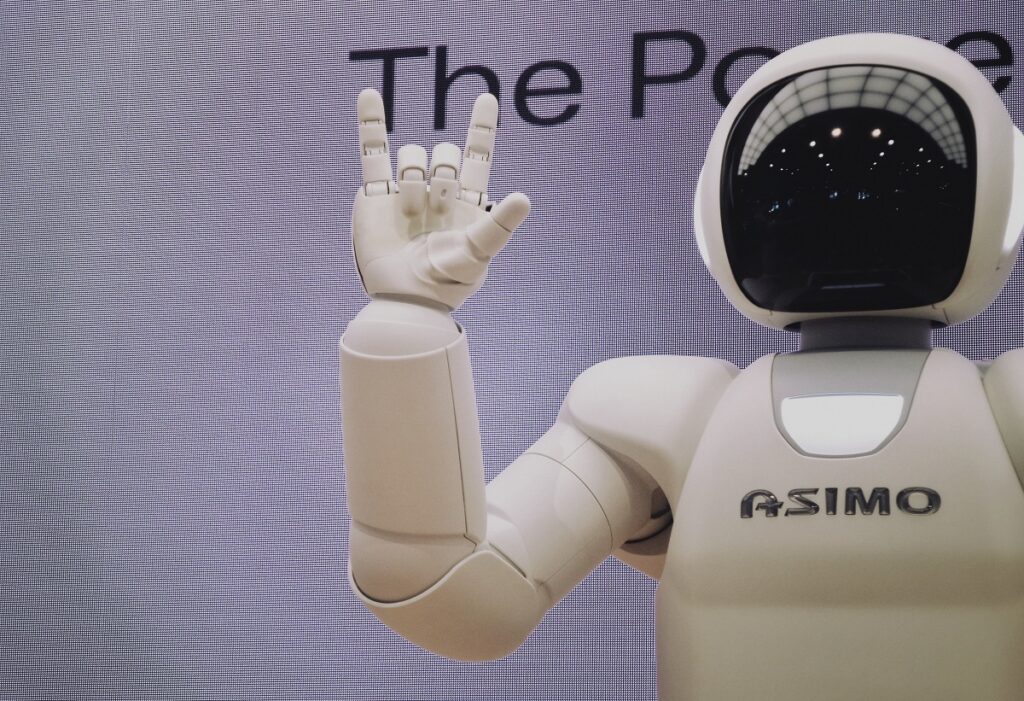The term artificial intelligence (AI) was introduced in 1956 by John McCarthy at an international conference at Dartmouth University.
In the 60s of the last century, the US Department of Defense became interested in developments – computers were designed that mimic human reasoning. These works formed the basis of modern solutions. Today, AI refers to the special properties of programs that can perform complex functions similar to human activities.
Table of Contents
Let’s understand the basic concepts:
Artificial intelligence
This term refers to the field of computer science, within which computer programs are developed to perform tasks that can imitate the human approach – to discover meaning, generalize and draw conclusions, identify relationships and learn from experience .
Artificial intelligence does not replace anyone, the purpose of its application is to expand and complement human capabilities.
Machine learning
Is one of the areas of artificial intelligence, thanks to which the key property is embodied – self-learning based on the received data. The greater the amount of information and its variety, the easier it is for AI to find patterns and the more accurate the result will be.
A neural network
(neural network) in the context of this topic is one of the types of machine learning – a special mathematical model and its software implementation, which in a simplified form recreates the principles of the structure and operation of a biological neural network.
The key property of a neural network is the use of experience for self-learning, i.e. the more data the AI has at its disposal, the fewer errors are made.
Natural Language Processing
(NLP) is the ability of a software solution or a computer to recognize, understand and reproduce the usual human language. An artificial intelligence system is a custom AI application or a set of them for solving business problems, the implementation of which was traditionally left to a person.
The development of artificial intelligence as a direction is associated with the need to solve specific tasks, which are often laborious for people. However, for now, each development closes its own narrow range of tasks: for medical purposes, for automating and optimizing routine processes, smart global information retrieval, etc.
Why are artificial intelligence technologies gaining popularity right now?
Since the middle of the 20th century, science fiction writers and filmmakers have been tirelessly creating works on the topic of AI and robots. However, the real use of high technologies became possible only recently – 10-15 years ago, several factors contributed to this:
- high-power computing resources (performance) have become more accessible. It is not only about the availability of such machines, but also about the pricing policy. And with the development of cloud technologies, the need to host everything locally has disappeared – another point on which money is saved.
- enough information has been accumulated for AI training. Firstly, humanity began to actively use computers in work, which eventually made it possible to collect the necessary data in digital form. Secondly, we have learned how to process structured and unstructured information.
- companies have tested and seen the effect of using artificial intelligence technologies — fast document recognition and further processing, issuing recommendations based on analysis, reducing the labor intensity of manual operations and instantly identifying risks.
- the general course of large organizations towards digital transformation, which implies not only the introduction of advanced technologies to enhance competitive advantages, but also a change in the approach to familiar processes in general.
Application of artificial intelligence
The demand for advanced technology is growing in every industry. For example, in healthcare, “smart” personal assistants are needed that will remind you of taking medications in time, monitor a person’s physical activity, and in the future help to choose treatment tactics, in trade AI helps to predict the turnover of goods, and in financial transactions it helps to detect fraud.
There are many applications for artificial intelligence programs, but they are all based on several key properties:
- AI is a software solution that is used to automate human manual tasks that are performed frequently and on a large scale.
- artificial intelligence programs most often work in conjunction with other applications and significantly increase their efficiency: for example, voice assistants in smartphones, bots in online stores, automatic document processors at the secretary.
- progressive learning algorithms and constant adaptation: AI finds patterns in large amounts of data, therefore it is able to make recommendations and predict performance.
- The amount of data that AI can analyze and use in its work is huge. With the advent of sufficiently powerful (productive) computers, it became possible to store and process a lot of information.
- high accuracy in solving problems, while the accuracy increases with the increase in the amount of data available for analysis and training. In addition, the machine does not get tired – mistakes that a person makes due to fatigue, inattention, incorrect calculations are excluded.
Closer to reality – AI in the business processes of a modern office
Large modern organizations, for the most part, have passed the stage of digitalization of the main business processes – office work, meeting management, work with contracts, appeals from citizens and organizations, etc. Further development of projects takes place in two directions: the first is the coverage of new areas, such as personnel records management, travel management, the second is the reduction of the labor intensity of performing daily tasks.
The use of intelligent services, such as Ario, just helps to reduce labor intensity and get rid of routine.
Office work
Manual transfer of information from incoming correspondence to the electronic document management system (EDMS) is excluded:
- documents are picked up from a scanner or email and then sorted into sets
- Ario services also recognize text and extract the necessary information
- all copies are classified and entered into the EDMS with automatic filling of cards.
Smart Search will help you quickly find information, even if the exact criteria are not set, and the request is entered in free form and only an approximate meaning is reflected.
Accounting
The processing of incoming sets is simplified, and the correctness of their filling is checked automatically:
- incoming primary accounting documents are recognized by Ario and distributed so that the accountant receives them in the form of ready-made sets for verification;
the artificial intelligence program checks the completeness of the kit, the correctness of the specified amounts, compares with the order, specifications and nomenclature. The account and cost item are determined as accurately as possible. - In payment documents, the AI-enabled system determines the account and cost item by payment purpose and counterparty.
It also simplifies the preparation of advance reports – documents are created automatically on the basis of electronic tickets and photos of receipts. Ario services fill in the fields of the report and send it for approval.
Contractual activity
The efficiency of already automated processes increases: Ario services check how different the content of the digital version of the contract is from the signed paper copy. All mismatches are highlighted. In addition, the artificial intelligence system controls the availability of mandatory details and checks the terms of the contract in terms of possible risks: fines, penalties, payment terms.
Work with appeals
Ario services identify incoming requests by content and classify requests by type, such as support tickets and requests from businesses and individuals.
Registration cards are filled in automatically, incl. responsible is determined. It remains for the registrar to check the correctness of filling.
Personnel processes
Ario services help to recognize personal documents (passport, certificates, diplomas, etc.) received from a scanner or mail. The HR service specialist receives documents on the candidate with the cards already filled in the system.
What hinders the effective use of AI technologies?
As accessible as the capabilities of an artificial intelligence program are today, there remains an extremely significant obstacle to unlocking their full potential. Surprisingly, the main difficulty is the person himself, his trust and depth of knowledge.
The first thing that comes across is distrust of technology. Users often do not understand how it all works, so they cannot fully “trust” the machine and constantly double-check the results. This is how it should be at the beginning of working with a new technology, but after six months, the correctness of AI actions should not raise questions. The extreme degree of mistrust is outright sabotage of the use of solutions or refusal to provide complete and up-to-date data for AI training.
The second limitation is related to the competencies of IT professionals who implement and maintain such solutions. It’s no secret that AI is a complex technology that is labor-intensive to implement.
Summing up, it must be said that the use of artificial intelligence is already a different approach to work. It is important for employees to continuously learn and master technologies themselves. What is new today, tomorrow will be commonplace and ultimately save resources, allow you to tackle higher-level tasks – strategies, development, creativity, etc.

